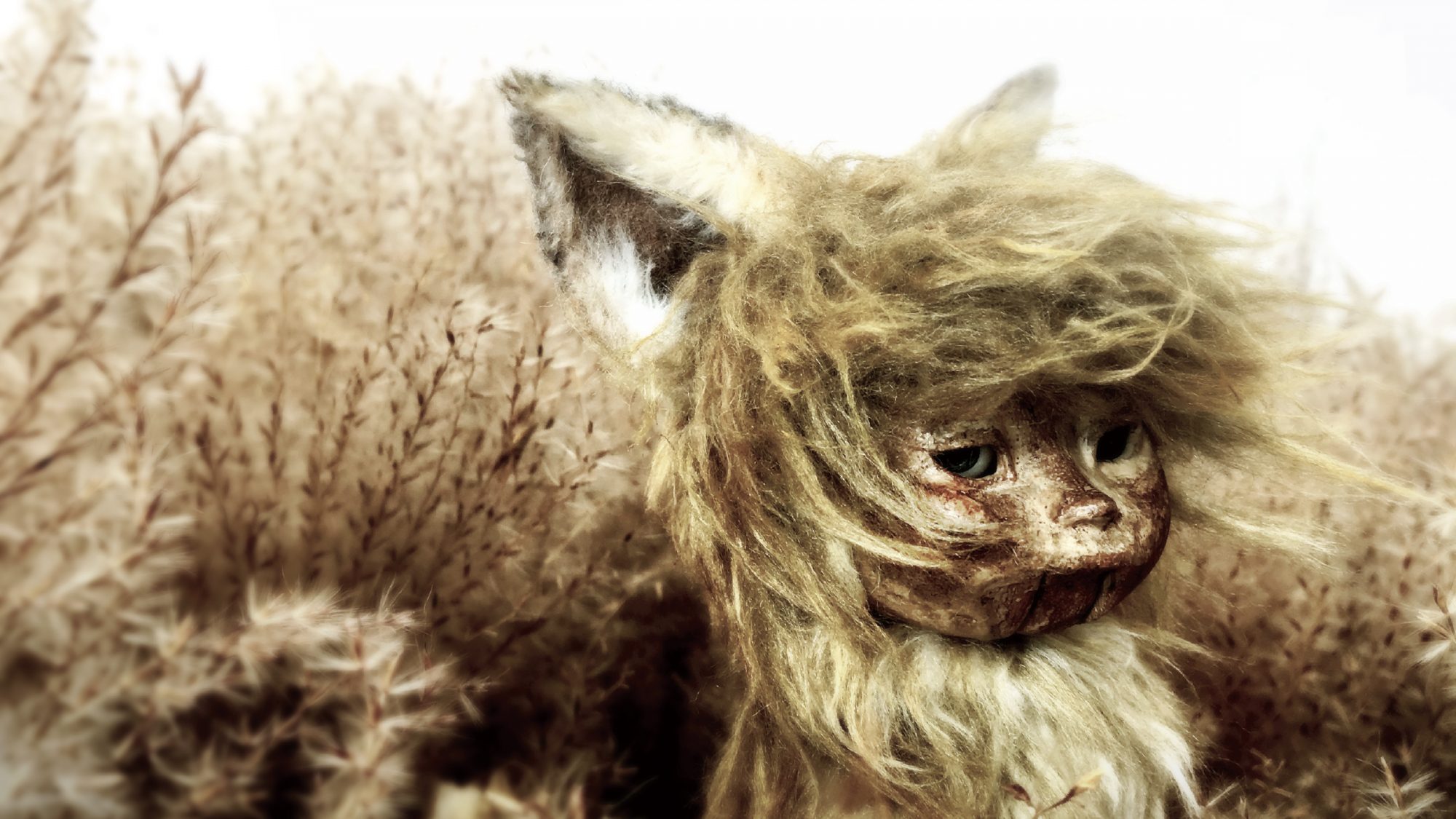23rd Animation Division Excellence Award
GON, THE LITTLE FOX
Animated short film
YASHIRO Takeshi [Japan]
Outline
A stop-motion animated film based on the beloved children’s story Gon, the Little Fox, by NIIMI Nankichi. A little fox named Gon plays a prank on Hyoju, a young man in the mountain village, by releasing his catch of eel back into the river. Soon after that, Gon sees the funeral procession for Hyoju’s mother, and realizes that Hyoju had caught the eel for his ailing mother. To atone for his prank, Gon begins to secretly leave chestnuts and matsutake mushrooms on Hyoju’s doorstep. One day, Hyoju spots the little fox leaving more chestnuts, but mistakes his actions for another prank and shoots him. Through the interaction between two different species—animal and human—the creators of this animated film bring into the spotlight the framework of the conflict between these incompatible entities. Carved from wood, the heads of the puppets in this stop-motion animation bear traces of their struggle with an issue that is difficult to handle satisfactorily. The flowing river is produced using real water, and houses and tools are recreated in miniature. These details reveal the creators’ meticulous adherence to reality. The exceptional beauty of the images thoroughly conveys the natural and seasonal ambience of Japan with precision.
Reason for Award
The heads of the puppets are delightful. The faces carved from natural wood convey the warmth and simplicity of trees and their resilience to wind and snow, and also express the personalities of the mountain dwellers Hyoju and Gon. Setting these puppets in motion creates a unique world with its own sense of vitality. The puppet animation is extraordinary. The humanlike image of Gon has the fascinating qualities of a free-spirited young boy, and bears a strong resemblance to the traditional Showa-period child: mischievous and guileless, yet lovable. Even though I knew how the story would end, I was fascinated by Gon’s movements and enjoyed following him through the scenes. All of them—with the river and fields, the red spider lilies—are quite beautiful and created with care and attention to detail. They are not overbearing, however, and are there to simply convey the story and depict the world in which the little fox lives. The episode with the red spider lilies is additional to the original story, but I was deeply impressed by the way in which it became emotionally bonding without exceeding the boundaries between humans and animals. This film was a delight. (YOKOSUKA Reiko)



